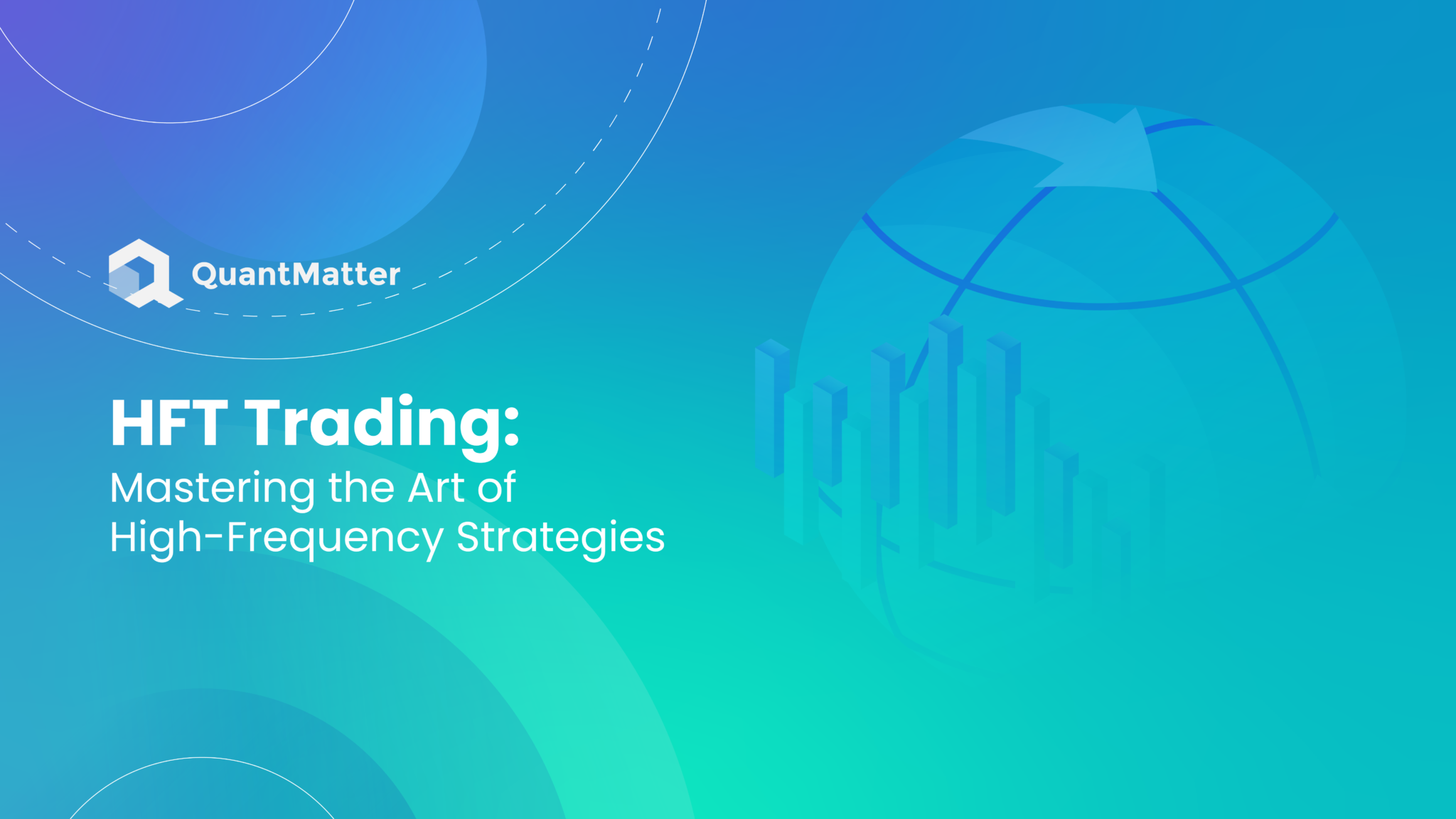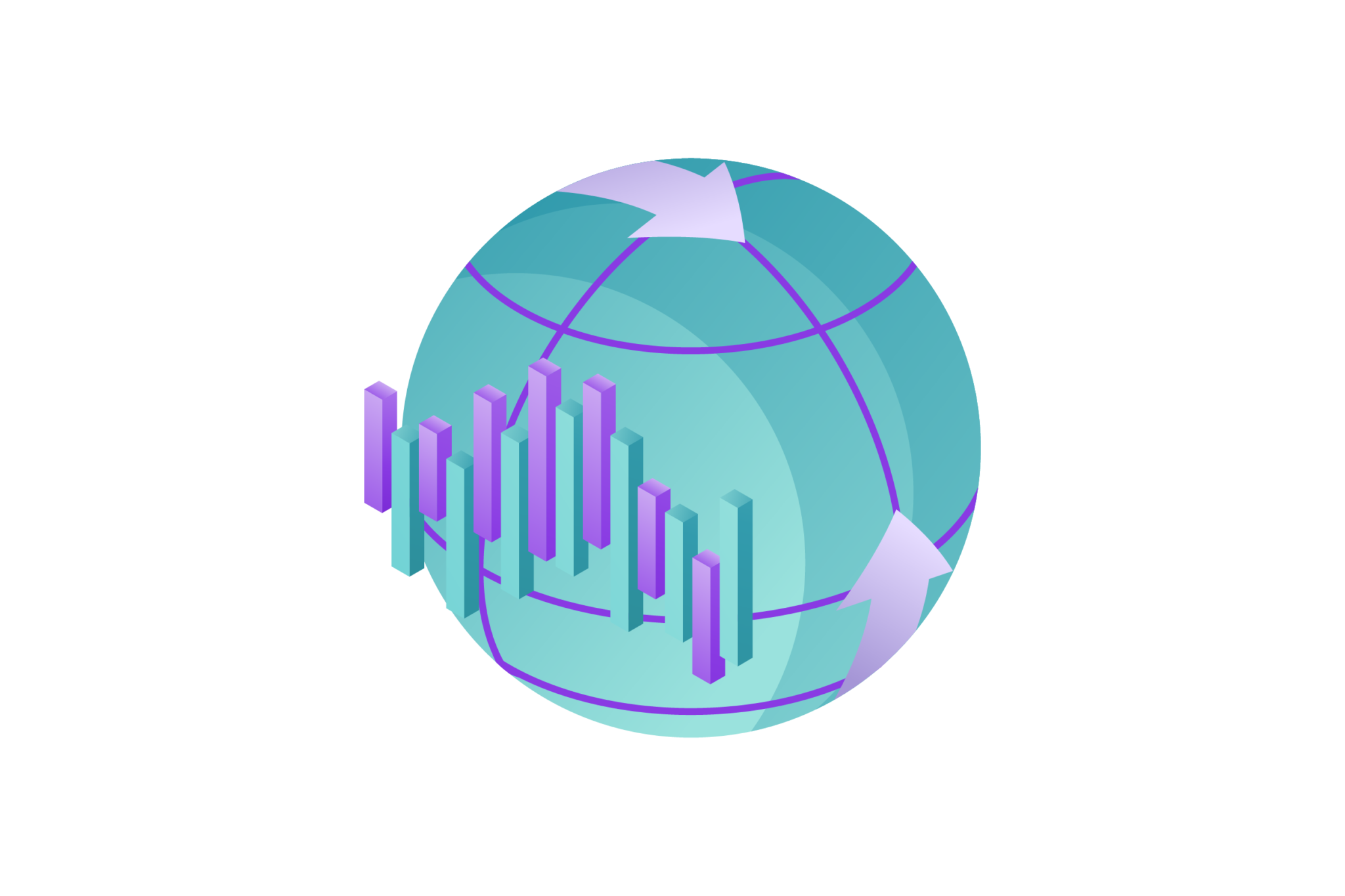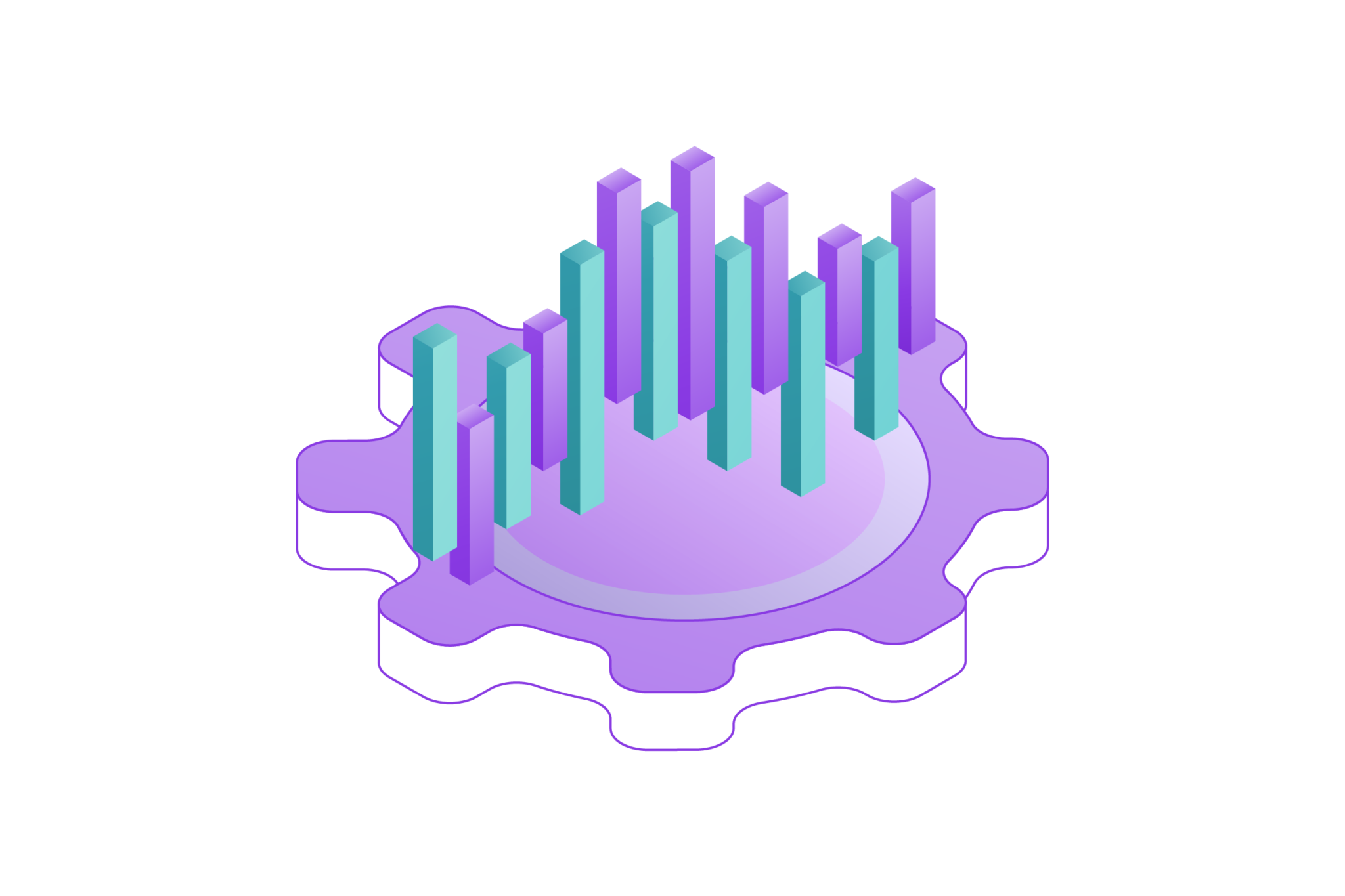
High-Frequency Trading (HFT) represents a segment of the financial markets that relies on advanced algorithms and powerful computers to execute a large number of orders at extremely high speeds. This trading method emerged with the advancement of technology, transforming the way trades are conducted on major stock exchanges worldwide.
HFT traders capitalize on minute price discrepancies that occur within fractions of a second. By doing so, they provide liquidity to the markets and can potentially earn significant profits. However, the rapid nature of HFT also brings about significant challenges, including the need for substantial technological infrastructure and the ability to respond to market changes almost instantaneously.
Understanding HFT is crucial for anyone involved in or interested in the financial markets. It not only influences trading strategies but also impacts market dynamics, pricing, and the overall efficiency of financial markets. As we delve deeper into HFT, we will explore its importance, common strategies, technological requirements, risks, regulatory environment, and future trends.
Importance and Impact of HFT Trading

High-Frequency Trading plays a pivotal role in modern financial markets. Its significance can be observed through various dimensions, including liquidity provision, market efficiency, and price discovery.
- Liquidity Provision: One of the primary contributions of HFT is the increased liquidity it brings to the markets. By placing a large number of buy and sell orders, HFT traders ensure that there is a constant flow of transactions. This liquidity is essential for the smooth functioning of markets, allowing investors to execute trades more easily and with lower transaction costs.
- Market Efficiency: HFT enhances market efficiency by narrowing bid-ask spreads. The rapid execution of trades ensures that price discrepancies are quickly corrected, leading to more accurate pricing of assets. This efficiency benefits all market participants, as it reduces the cost of trading and minimizes the risk of significant price fluctuations.
Also Read: 7 Best AI Crypto Coins to Consider in 2024
- Price Discovery: HFT also plays a crucial role in the price discovery process. By continuously analyzing market data and executing trades based on this information, HFT firms contribute to the setting of fair market prices. This process helps in reflecting the true value of financial instruments, benefiting both individual and institutional investors.
However, the impact of HFT is not entirely positive. Critics argue that HFT can lead to increased market volatility and may contribute to flash crashes, where prices drop sharply within a very short period. Additionally, the competitive nature of HFT can sometimes result in unfair advantages for firms with superior technology and resources.
Common HFT Trading Strategies

High-Frequency Trading encompasses various strategies, each designed to exploit different aspects of market behavior. Here, we will discuss some of the most prevalent HFT trading strategies in detail.
1. Market Making
Market making involves placing both buy and sell orders for a particular security to capture the bid-ask spread. HFT firms act as intermediaries, buying low and selling high within seconds. This strategy provides liquidity to the market, ensuring that other traders can buy and sell securities with ease.
Market makers continuously quote buy and sell prices and adjust these quotes in response to market conditions. For instance, if there’s increased demand for a stock, they might raise their buy and sell prices slightly to profit from the spread. By doing this thousands of times a day, they accumulate small profits that can add up significantly. This strategy is beneficial for the market as it reduces the bid-ask spread, making trading cheaper for all participants. However, market makers need sophisticated algorithms to manage the risk of holding large inventories of securities, which can fluctuate in value rapidly.
2. Arbitrage
Arbitrage strategies involve taking advantage of price discrepancies between different markets or instruments. For example, if a stock is priced differently on two exchanges, an HFT trader can buy the stock at a lower price on one exchange and sell it at a higher price on another. This strategy requires advanced technology to identify and act on these opportunities rapidly.
A classic form of arbitrage is cross-exchange arbitrage, where discrepancies in the price of an asset across different exchanges are exploited. Another form is statistical arbitrage, which involves using quantitative models to predict the convergence or divergence of prices between related assets. This could involve trading pairs of stocks that historically move together but have temporarily deviated. Arbitrage opportunities often exist only for a brief moment, making the speed of execution critical. HFT firms employ powerful computers and algorithms to scan multiple markets and execute trades in milliseconds.
3. Momentum Ignition
This strategy aims to trigger a rapid price movement in a particular direction. An HFT firm might place a series of small trades to create the appearance of increased buying or selling pressure, prompting other traders to follow suit. Once the price starts moving, the HFT firm can capitalize on the momentum by taking an opposite position.
Momentum ignition can involve a series of buy or sell orders placed in quick succession to give the illusion of substantial market interest. This can attract other traders, including retail investors and other HFT firms, who respond to the perceived momentum. Once the price begins to move significantly, the initiating HFT firm reverses its position, profiting from the price change. This strategy relies heavily on understanding market psychology and the behavior of other traders. While potentially profitable, momentum ignition can contribute to market volatility and has been scrutinized by regulators for potential market manipulation.
4. Statistical Arbitrage
Statistical arbitrage relies on complex mathematical models to identify trading opportunities based on historical price data. HFT firms use these models to predict price movements and execute trades accordingly. This strategy often involves pairs trading, where two correlated securities are traded against each other.
In statistical arbitrage, traders use statistical methods to identify patterns and relationships between different securities. For example, if two stocks typically move together but have temporarily diverged, a trader might buy the underperforming stock and sell the outperforming one, betting that they will revert to their historical relationship. These strategies require vast amounts of historical data and sophisticated algorithms to analyze and predict price movements. Traders continuously update their models to account for new market conditions and anomalies. While statistical arbitrage can be highly profitable, it also involves significant risk, as correlations between assets can change unexpectedly.
5. Latency Arbitrage
Latency arbitrage exploits the time delays between the transmission of market data and the execution of trades. HFT firms with the fastest technology can capitalize on these delays, gaining a price advantage over other market participants. This strategy requires cutting-edge infrastructure and low-latency connections to the exchanges.
Latency arbitrage focuses on the tiny time gaps that occur when information travels between different market participants and exchanges. HFT firms invest heavily in technology to minimize these delays, including using colocated servers directly within exchange data centers. By having faster access to market data, these firms can react to price changes before others do. For example, if a firm detects a price change in a stock on one exchange, it can quickly execute a trade on another exchange where the price has not yet adjusted. This strategy can yield substantial profits, but it also requires constant technological upgrades and significant investment in infrastructure to maintain a competitive edge.
Technology and Tools in HFT Trading

High-Frequency Trading relies heavily on advanced technology and sophisticated tools to execute trades at lightning speed. The success of HFT firms is often determined by their technological edge. Here, we will explore the key technologies and tools that are integral to HFT trading.
1. Low-Latency Networks
The speed at which information travels from the trader to the exchange and back is crucial in HFT. Low-latency networks minimize the delay in this communication. Firms invest in dedicated fiber optic cables, microwave, and millimeter-wave technology to achieve the fastest possible data transmission. These technologies ensure that orders reach the exchange milliseconds faster than competitors, providing a significant advantage in executing trades.
2. Colocation Services
Colocation involves placing trading servers in close proximity to the exchange’s data centers. This reduces the physical distance that data must travel, further decreasing latency. Exchanges offer colocation services to HFT firms, allowing them to house their servers within the same facility as the exchange’s matching engine. This proximity can shave microseconds off the time it takes to execute trades, which is critical in the world of HFT.
3. High-Performance Computing
HFT requires the processing of vast amounts of data in real-time. High-performance computing systems, equipped with powerful CPUs and GPUs, are essential for running complex algorithms and models. These systems can analyze market data, identify trading opportunities, and execute trades within milliseconds. The continuous improvement and upgrading of hardware are necessary to maintain a competitive edge.
4. Advanced Algorithms
At the heart of HFT are sophisticated algorithms that make trading decisions. These algorithms are designed to process market data, identify patterns, and execute trades based on predefined criteria. Machine learning and artificial intelligence are increasingly used to develop algorithms that can adapt to changing market conditions and improve their performance over time. These advanced algorithms can analyze historical data, recognize trends, and optimize trading strategies to maximize profits.
5. Data Feeds and Market Data
Access to real-time market data is essential for HFT. Firms subscribe to data feeds from exchanges and other financial data providers to receive the latest information on prices, volumes, and market movements. These data feeds must be processed and analyzed in real-time to inform trading decisions. Any delay or inaccuracy in the data can result in missed opportunities or losses.
6. Risk Management Systems
Given the speed and volume of trades in HFT, effective risk management is crucial. HFT firms use advanced risk management systems to monitor their positions, manage exposure, and ensure compliance with regulatory requirements. These systems can automatically adjust trading strategies in response to market conditions and limit potential losses. Real-time risk assessment tools help in maintaining the stability and integrity of trading operations.
7. Software and Trading Platforms
HFT firms rely on specialized software and trading platforms that support high-speed trading. These platforms are designed to handle large volumes of orders and execute trades with minimal latency. Custom-built trading software, tailored to the firm’s specific strategies and needs, is often developed in-house. Continuous testing and optimization of this software are necessary to ensure its reliability and performance.
The technology and tools used in HFT are constantly evolving, driven by advancements in computing power and communication networks. Staying ahead in this fast-paced environment requires significant investment and continuous innovation.
Risks and Regulatory Aspects of HFT Trading
High-Frequency Trading, while lucrative, comes with significant risks and faces stringent regulatory scrutiny. Understanding these risks and the regulatory landscape is crucial for any HFT firm to operate successfully.
Risks in HFT Trading
- Market Risk: Market risk refers to the potential for losses due to adverse price movements. In HFT, trades are executed within fractions of a second, but even in this short time, prices can move unfavorably. The high leverage used in HFT magnifies these risks. For instance, sudden market shifts, such as during a flash crash, can result in significant losses before the trading algorithms have time to respond.
- Technology Risk: Given its reliance on cutting-edge technology, HFT is highly susceptible to technology failures. System glitches, software bugs, and network outages can lead to missed trades, erroneous trades, or significant financial losses. Furthermore, the competitive nature of HFT means firms must continually upgrade their technology, which can introduce new risks during implementation and testing phases.
- Liquidity Risk: Liquidity risk arises when there is insufficient market liquidity to execute trades at desired prices. HFT firms depend on market liquidity to quickly enter and exit positions. In times of market stress or low liquidity, it can be challenging to execute trades without impacting prices significantly, potentially leading to losses.
- Regulatory Risk: HFT operates in a heavily regulated environment. Regulatory bodies across the globe have introduced various rules to ensure market stability and fairness. For instance, the Securities and Exchange Commission (SEC) in the United States and the European Securities and Markets Authority (ESMA) in Europe have implemented measures to oversee HFT activities. Regulations such as the Markets in Financial Instruments Directive (MiFID II) in Europe require extensive reporting and transparency from HFT firms. Non-compliance with these regulations can result in hefty fines and legal repercussions.
- Market Manipulation Risk: There are concerns that some HFT strategies might border on market manipulation. Practices like spoofing, where traders place orders with the intention of canceling them to create false market signals, are illegal and can attract regulatory scrutiny. Ensuring that trading strategies comply with legal and ethical standards is essential to avoid penalties and maintain a firm’s reputation.
- Counterparty Risk: In the context of HFT, counterparty risk refers to the risk that the other party in a trade might default on their obligations. This risk is particularly relevant in over-the-counter (OTC) markets where trades are not always guaranteed by a central clearinghouse. Firms must assess the creditworthiness of their trading partners to mitigate this risk.
- Operational Risk: Operational risk encompasses a range of risks related to the day-to-day functioning of HFT firms. This includes risks from inadequate processes, human errors, and external events. For instance, an incorrect input by a trader or an algorithm malfunction can result in unintended trades. Robust operational controls, including thorough testing of algorithms and continuous monitoring of trading activities, are essential to mitigate these risks.
Regulatory Measures in HFT
Regulators have introduced several measures to oversee and control HFT activities, aiming to enhance market stability and protect investors.
- Circuit Breakers: Circuit breakers are mechanisms designed to temporarily halt trading on an exchange if prices move too rapidly within a short period. This pause allows the market to cool down and prevents panic selling or buying, thereby maintaining market order. For example, the SEC implemented circuit breakers following the 2010 flash crash to curb excessive volatility.
- Order-to-Trade Ratios: Some regulators have imposed limits on the number of orders that can be placed relative to the number of trades executed. This measure aims to prevent excessive order cancellations, which can be disruptive to the market. High order-to-trade ratios are often associated with manipulative strategies like spoofing.
- Minimum Resting Times: Certain jurisdictions require orders to remain in the order book for a minimum period before they can be canceled. This measure is intended to reduce the number of fleeting orders and ensure that quotes represent genuine trading interest.
- Surveillance and Monitoring: Regulators have enhanced their surveillance capabilities to monitor HFT activities more effectively. Advanced data analytics and monitoring tools are used to detect suspicious trading patterns and potential market manipulation. Firms are also required to maintain detailed records of their trading activities for regulatory review.
- Financial Transaction Taxes: Some countries have considered or implemented financial transaction taxes (FTTs) on high-frequency trades. The aim is to discourage excessive trading and reduce market volatility. However, there is debate over the effectiveness of such taxes, as they might also impact market liquidity.
Navigating the regulatory landscape is complex and requires HFT firms to invest in compliance and legal expertise. Adhering to these regulations not only avoids penalties but also fosters a fair and transparent market environment.
Future Trends in HFT Trading
High-Frequency Trading is poised for significant transformation as new technologies and market dynamics emerge. Artificial intelligence and machine learning are increasingly shaping HFT strategies, allowing for more sophisticated and adaptive trading algorithms. Quantum computing, with its unparalleled computational power, promises to revolutionize the industry, enabling the development of advanced quantum algorithms that can analyze and predict market trends with unprecedented accuracy. Meanwhile, blockchain and distributed ledger technology are enhancing transparency and security in trading, offering new ways to verify trades, reduce settlement times, and minimize counterparty risk. These technological advancements, combined with continuous innovations in network latency reduction, will further accelerate the speed and efficiency of HFT.
Also Read: The Best Crypto On-Ramp Platforms for 2024
Regulatory changes and environmental concerns are also influencing the future of HFT. Regulatory bodies are likely to implement new rules to increase transparency, reduce market manipulation, and protect investors, requiring HFT firms to invest in robust compliance systems. Additionally, the industry’s growing focus on sustainability is driving efforts to reduce the carbon footprint of trading infrastructure. As HFT expands into new markets such as cryptocurrencies and commodities, firms are exploring collaborations and partnerships to access cutting-edge technologies and data analytics tools. Adapting to these evolving trends will be crucial for HFT firms to maintain a competitive edge and capitalize on new opportunities in this dynamic landscape.
Conclusion
High-Frequency Trading has revolutionized the financial markets by leveraging speed, technology, and sophisticated algorithms to execute trades in milliseconds. Its impact on liquidity provision, market efficiency, and price discovery has been significant, making it a vital component of modern trading ecosystems. However, the rapid nature of HFT also introduces substantial risks, including market, technology, and liquidity risks, all of which require robust risk management and compliance frameworks to mitigate.
As the industry advances, the integration of artificial intelligence, machine learning, quantum computing, and blockchain technology will continue to drive innovation in HFT. These technologies promise to enhance the capabilities of trading algorithms, improve market transparency, and reduce latency. At the same time, evolving regulatory landscapes and environmental concerns will shape the future operational strategies of HFT firms. Staying ahead in this fast-paced environment will require continuous adaptation and investment in cutting-edge technology and compliance measures. By understanding and addressing these challenges, HFT firms can navigate the complexities of the market and harness the potential of future trends to achieve sustainable success.
Disclaimer: The information provided by Quant Matter in this article is intended for general informational purposes and does not reflect the company’s opinion. It is not intended as investment advice or a recommendation. Readers are strongly advised to conduct their own thorough research and consult with a qualified financial advisor before making any financial decisions.
Joshua Soriano
As an author, I bring clarity to the complex intersections of technology and finance. My focus is on unraveling the complexities of using data science and machine learning in the cryptocurrency market, aiming to make the principles of quantitative trading understandable for everyone. Through my writing, I invite readers to explore how cutting-edge technology can be applied to make informed decisions in the fast-paced world of crypto trading, simplifying advanced concepts into engaging and accessible narratives.
-
Joshua Soriano#molongui-disabled-link
-
Joshua Soriano#molongui-disabled-link
-
Joshua Soriano#molongui-disabled-link
-
Joshua Soriano#molongui-disabled-link

